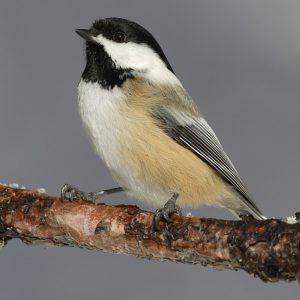 This strange, dark, mild winter (so far) has been mostly unremarkable in the yards of both my home and work. There are birds, to be sure, but mostly those of the “usual suspect” variety. That being said, it’s good to have a reason to get out and explore once in a while, even if it’s close to home. In the last couple of weeks two extremely different species have been attracting attention for very different reasons.
This strange, dark, mild winter (so far) has been mostly unremarkable in the yards of both my home and work. There are birds, to be sure, but mostly those of the “usual suspect” variety. That being said, it’s good to have a reason to get out and explore once in a while, even if it’s close to home. In the last couple of weeks two extremely different species have been attracting attention for very different reasons.
The first are Bald eagles, which seem to be common along the Lakeshore this year. In my youth, there were none in the Manitowoc area, at least to my awareness. I remember vacationing in northern Wisconsin and being thrilled at the sight of one. This year, 27 were recorded on the Manitowoc Christmas Bird Count. But not only are they around in winter, more are nesting in the county.
I participate in the Bald Eagle Nest Watch coordinated by Madison Audubon, and recently have been out trying to verify locations for nests in Manitowoc County. The DNR has information on bald eagle nests in general, but some of the information has not been verified for several years, so we are challenged to verify whether or not nests are still active. Although bald eagle nests are huge, they can be hard to find. If a nest is in a deciduous tree with leaves off that is out in the open, not so bad. If it’s nestled nicely far up in a flat-topped white pine, even a huge nest can be barely noticeable. The best scenario is to have an eagle or two perched nearby- they are much easier to spot than nests sometimes.
There are at least a half-dozen or so nests in Manitowoc County, and more volunteers than that willing to spend some time documenting the goings-on at those places. Volunteers weekly document the birds’ behaviors at their nest- significant life events like nest building, courtship and copulation, egg laying, feeding young, and fledging. The whole process might take five months or so, and is not always successful. Fortunately, eagles are long-lived and will try again if need be.
Second are the ubiquitous chickadees. At our station, after banding saw-whets in the fall we return to banding songbirds occasionally. In winter our goal is to band tree sparrows, which can be numerous in the yard. When we are able to band some, we often see banded birds the following winter. We aren’t always able to catch those particular birds, but it seems likely that they returned again to the same area after migrating to and from the arctic. Although they are the goal, we are much more likely to catch chickadees, which seem fearless in terms of mist nets and poles and such, often landing on them and scolding us. If caught, they immediately struggle ferociously and in seconds are not only caught, they are tangled. As a result we watch the nets constantly and hurry to remove a chickadee before it’s tangled, and we seldom get there in time. Then, as we gently remove them from the net, they turn their full wrath on us, scratching (and becoming more tangled in the process) and biting with surprising force for such a small bird. Other chickadees come to help, and we are soon being scolded from all sides. After patiently removing the little spitfires, we band and measure them. We try to estimate their age by the wear of their feathers, but it is a difficult process. Then they are released, to carry a grudge from thence forward, but often to be caught again despite their rage. As time goes by we get to know the chickadees, even though we can only wish they would cooperate more like juncos or tree sparrows or goldfinches. And even though they are common and seemingly not migratory, they still surprise us. Last fall we recaptured one that had been banded by Bernie Brouchoud five years ago, before his passing. The bird was in excellent condition, and it was a privilege to hold a bird banded by the founder of our center.
But one of the most interesting aspects of chickadee banding is how many more there are than one might suspect. Usually there are a half-dozen or so hanging around the feeders, coming and going constantly. One would think there are a dozen or maybe two in the neighborhood, but a few years ago we banded fifty one winter and there were still unbanded birds in the yard and at the feeders. There were far more chickadees than we thought there were, which to us was a wonderful discovery. That was of course in winter when they are social. In summer their crankiness is turned on each other as they space out in breeding territories, and one sees few of them in the yard.
Whatever the season, we’re glad that bald eagles don’t seem to have the personalities of chickadees. If that were the case, I don’t think we’d survive an encounter with them!
photo- black-capped chickadee from Wikipedia
—
